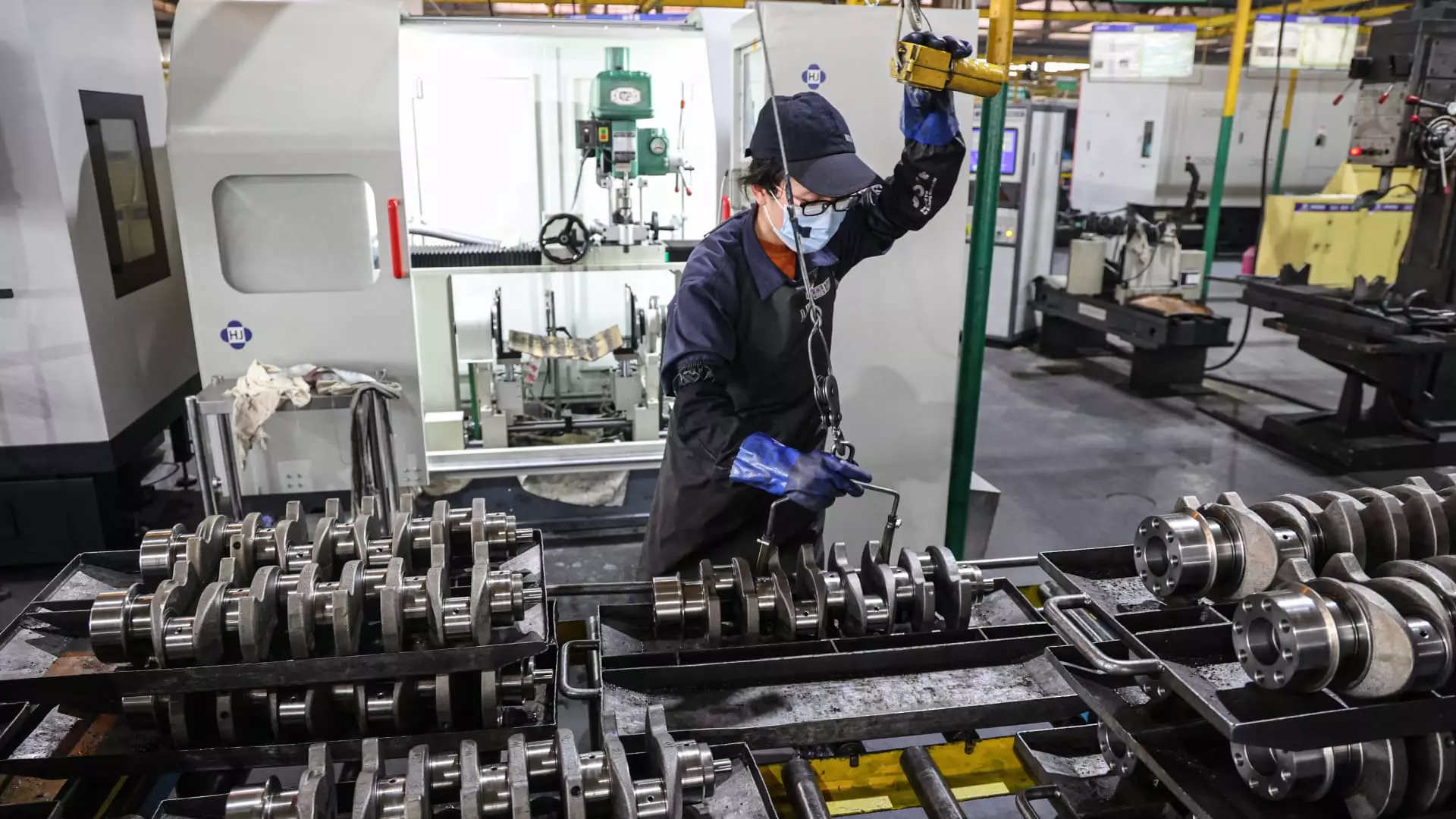Despite the torrential downpour of U.S. tariffs and uncertainties that cloud the global economic landscape, China’s industrial sector is managing a defiant march forward. The recent data revealing a 3% increase in industrial profits for April, which marks a consistent upward trend over the previous month, presents a picture of resilience that is commendable yet precariously balanced. The figures released by the National Bureau of Statistics (NBS) reflect an intriguing dichotomy, showcasing growth in select high-tech sectors while revealing the strains placed on state-owned enterprises. The figures appear to hint at a shifting landscape, where innovation reigns supreme, albeit amidst a backdrop of declining prices and chronic demand insufficiencies.
The reassurance that China’s industrial profits rose 1.4% year on year in the first four months might excite observers of economic recovery. This optimism must be tempered by the reality of an ongoing trade war that has seen President Trump implementing tariffs as sky-high as 145% on Chinese imports. The dynamic nature of this trade dispute, characterized by mutual retaliation, evokes a sense of caution. While the trade truce in Geneva has lowered tariffs, the stark fact that Chinese goods will remain burdened by a hefty average of over 51.1% in levies demonstrates the precariousness of this truce.
The High-Tech Wave: Growth Amid Constraints
Within this tumultuous sea, the high-tech manufacturing sector emerges as a beacon of hope, boasting a remarkable 9% growth in profits year-on-year. Areas such as biopharmaceuticals and aircraft manufacturing are driving forward, catching the attention of not just domestic investors but also international observers seeking resilient stocks in a faltering global market. These sectors encapsulate the essence of China’s long-term strategy—shifting from traditional manufacturing toward technology-driven industries that promise sustained profitability and growth. It is a symbol of modern China that many in the international community often overlook when fixated on tariffs and trade deficits.
However, amid this emergent prosperity lies the stark reality of industrial challenges. Weining Yu from the NBS aptly captures this dichotomy by emphasizing the “constraints such as insufficient demand and declining prices” that threaten to destabilize these gains. Profit declines of 26.8% in the mining sector are sobering reminders that while certain sectors shine, not all industries are built to weather the storm of a trade war, illustrating the complexity and fragility of a rapidly shifting economy.
Class Divide: State vs. Private Enterprises
An intriguing narrative unfolds when examining the profits of state-owned enterprises against their private counterparts. The 4.4% decline in profits for state-owned industries starkly contrasts with the 4.3% increase in profits for private firms. This trend raises questions about competitiveness and efficiency within China’s economic model. Might we be witnessing the slow demise of state-owned dominance in favor of nimble, innovative private enterprises that can adapt quicker to both domestic needs and international pressures?
The implications are far-reaching, influencing investment decisions and shaping China’s economic policy moving forward. The state must grapple with the reality that its monopoly over industrial sectors is increasingly being challenged, as private companies continue to thrive, offering a glimpse into an evolving economic landscape where ideology may soon need to accommodate pragmatic realities.
A Cautionary Note: Navigating the Uncertainty
Despite the outward appearance of economic stability reflected in industrial profits, one cannot evade the underlying fragility of this growth. Volatile retail sales that slowed to a mere 5.1% year-on-year reveal a concerning imbalance that could unsettle the delicate equilibrium achieved in the industrial sphere. As much as economic policymakers may tout residual growth, the persistent undercurrents of demand shortfalls and external market pressures beckon a sobering reflection on the sustainability of such growth.
In navigating these murky waters, innovation is essential, although it alone may not solve all problems. The hesitancy among consumers and a fluctuating global economy pose ongoing challenges that China must confront with both strategic assertiveness and adaptive policies. The road ahead, littered with opportunities for growth, remains bogged down by the weight of external scrutiny and internal constraints. As the industrial sector continues to unfold its story of resilience, stakeholders must remain vigilant, recognizing both the victories achieved and the vulnerabilities that threaten this fragile resurgence.

